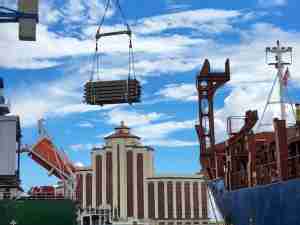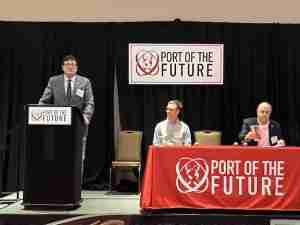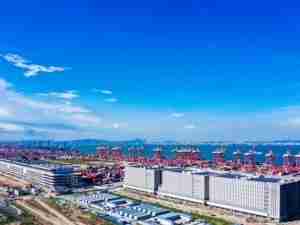At least two German shipping companies are avoiding Tokyo area ports due to radiation concerns from Japan's quake-crippled Fukushima nuclear plant, sparking worries of new supply chain bottlenecks if others in the industry follow their example.
Radiation levels as of in Tokyo's port, located 240 km (150 miles) south of the plant, were below exposure levels the World Health Organisation (WHO) considered normal, the ministry said.
"We are offering accurate and timely information. We ask that services to Tokyo and Yokohama ports continue, based on rational and scientific judgement," a ministry official said.
Yokohama is Japan's largest port, handling 271 million deadweight tonnes of cargo in 2010, while Tokyo was No. 4 with 156 million, according to Lloyd's List Intelligence.
Legally Liable
Shipping companies have also reconsidered their operations in eastern Japan because they were likely to be held financially responsible for any radiation injuries linked to Japan's nuclear crisis.
"All P&I insurance clubs have similar rules that excludes nuclear crisis coverage," said Satoshi Kurata, assistant manager for underwriting at the Japan P&I Club, one of many groups globally that provide protection and indemnity coverage to shipowners.
"If anything connected to the nuclear crisis occurs, then the shipowner should make a claim to the Japanese government."
Hapag-Lloyd, the world's fifth-biggest container shipper, and container ship operator Claus-Peter Offen have stopped going to Tokyo and Yokohama for the time being.
Rival shipping company Hamburg Sud had suspended calls at the two ports but resumed trips there.
Some industry officials believed the German companies were overreacting and did not see other firms diverting their cargoes away from Tokyo.
"It seems to me that the reaction is a little overblown," said Arthur Bowring, managing director of the Hong Kong Shipowners Association. "After speaking to a few members, they are just keeping well off the East Coast, but Tokyo Bay should not be a problem."
Experts say radiation leaking from the Japanese plant is still mainly below levels of exposure from flights or dental and medical x-rays.
Chinese officials, however, have detected what it said were "abnormal" radiation levels on a Japanese merchant ship entering the port at Xiamen in eastern Fujian province.
The report did not say how high the radiation levels were on the ship, which belongs to Mitsui O.S.K. Lines , or whether it had been turned away, Xinhua news agency reported.
WHO, the United Nation's International Maritime Organization, and the International Atomic Energy Agency have advised that maritime operations could continue as normal at seaports not damaged by the tsunami.
The March 11 disaster did less damage to Japan's port infrastructure than initially expected, with most of the supply chain problems located at railways, roads and factories.
All key Japanese seaports damaged by the March 11 disaster were now operational for recovery and reconstruction efforts.
"Fifteen of 15 ports in the afflicted area are usable. Multi-purpose piers are partly available, excluding Aomori port," the ministry said.
The estimated $300 billion damage from the quake and tsunami makes this the world's costliest natural disaster, dwarfing Japan's 1995 Kobe quake and Hurricane Katrina in New Orleans in 2005. (Reuters)










